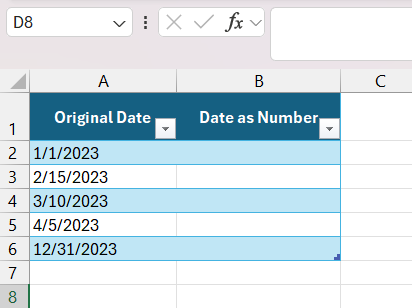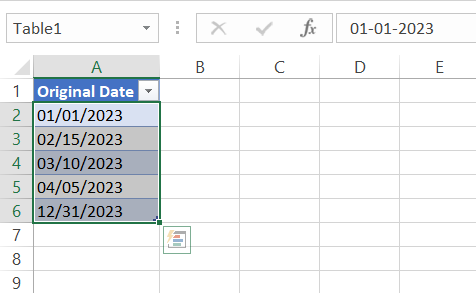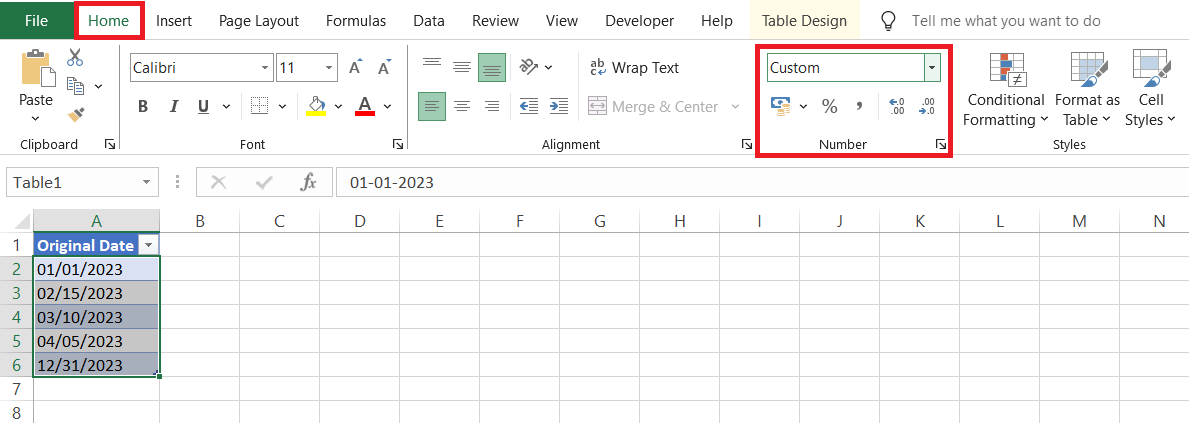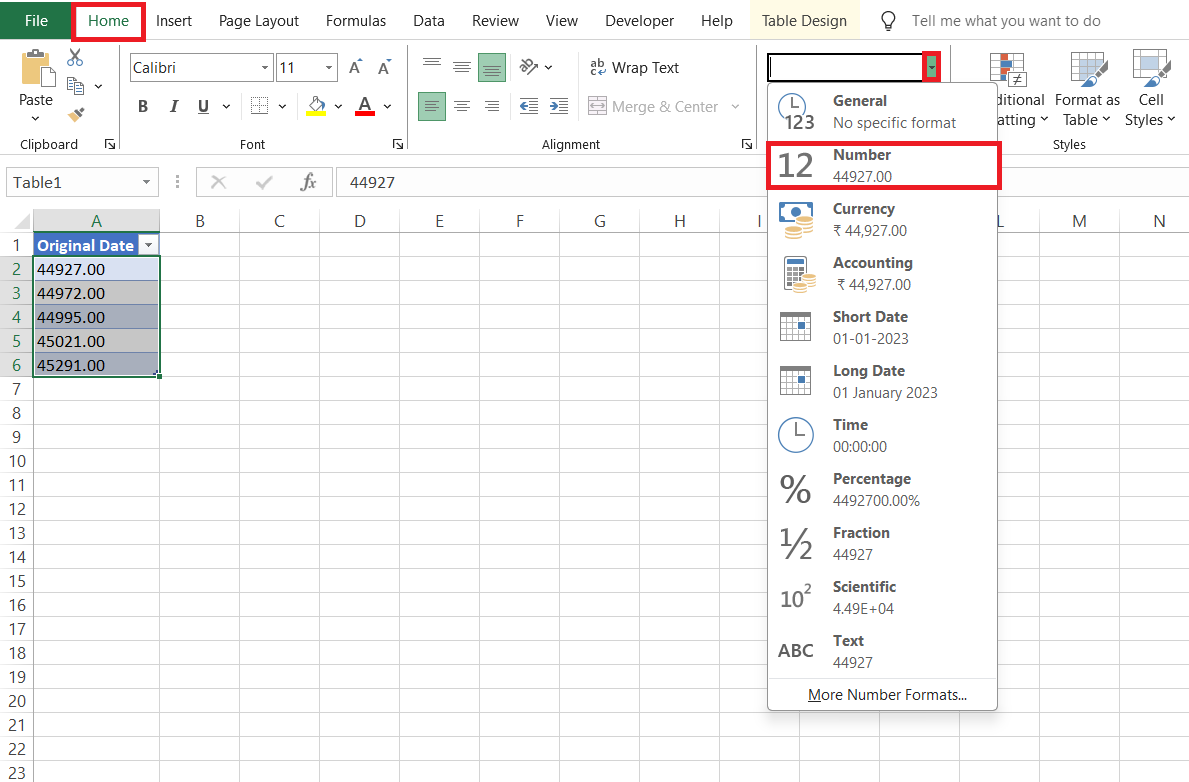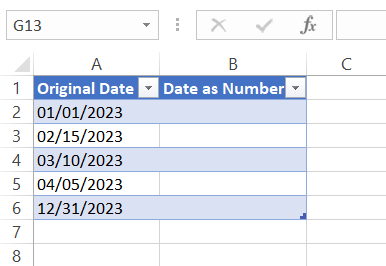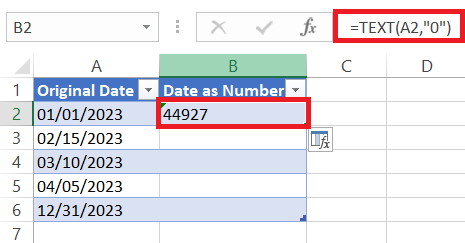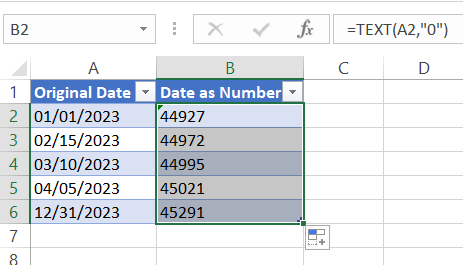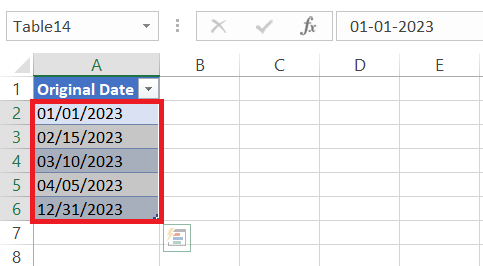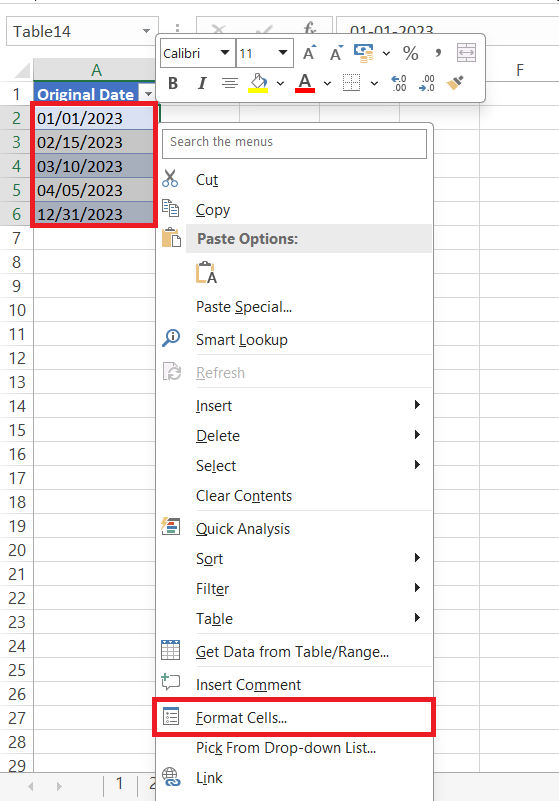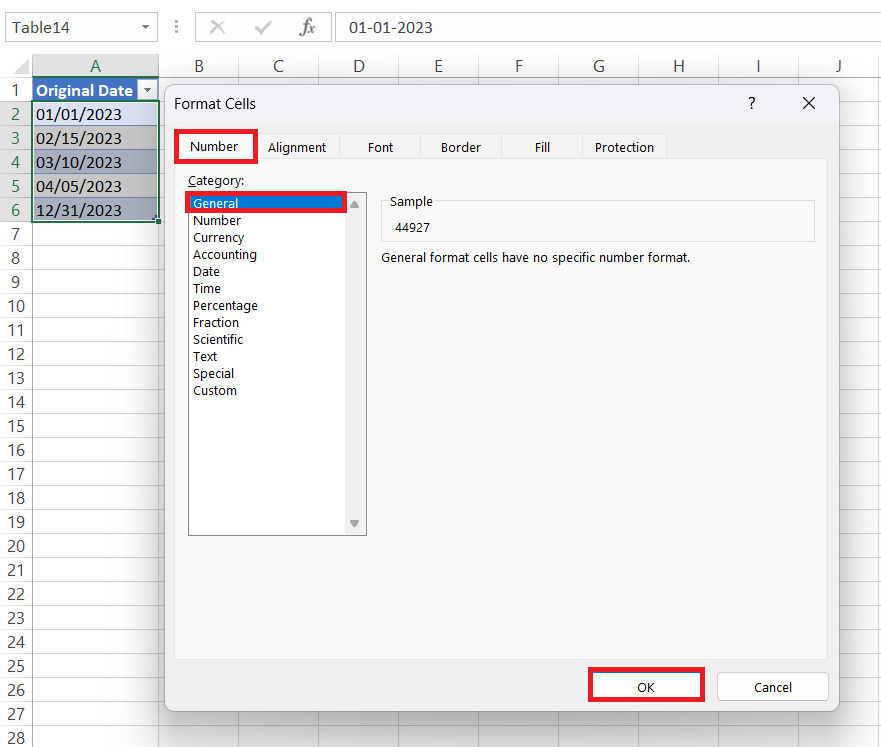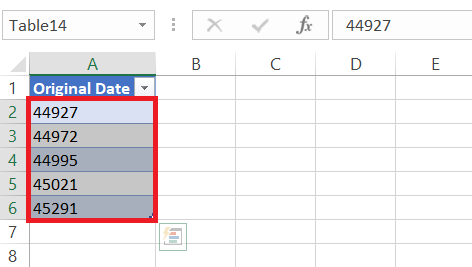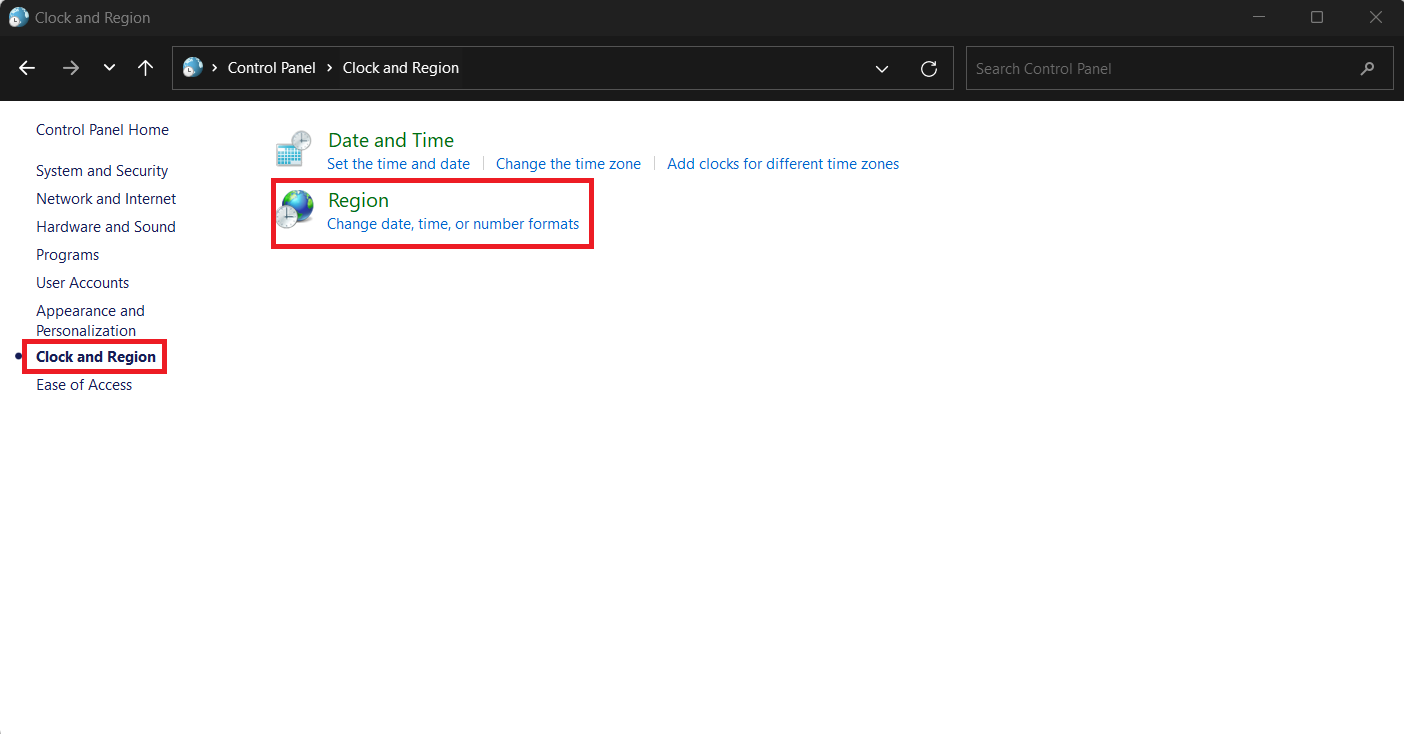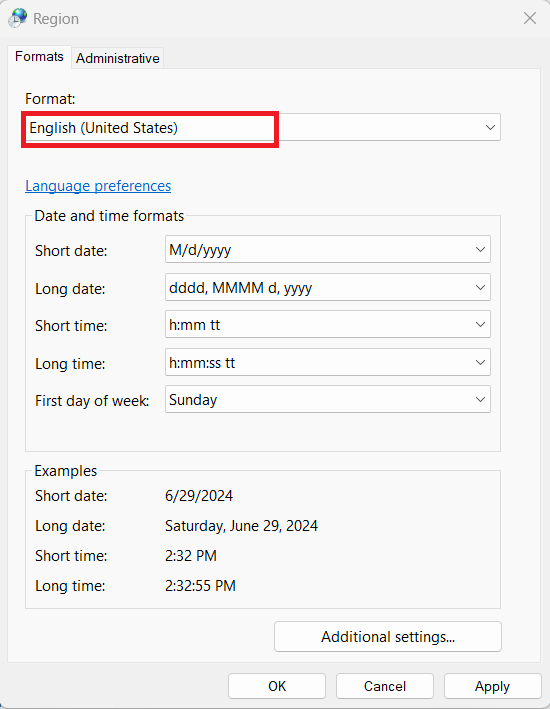- Excel treats dates as serial numbers starting from January 1, 1900.
- Ensure your dates are consistent and clean before converting them.
- Use the Format tool in the Ribbon for quick date-to-number conversions.
- The TEXT function can convert dates to numbers without traditional formulas.
- Utilize the DATEVALUE function to efficiently transform text-based dates into serial numbers.
Table of Contents
Cracking the Excel Code: Date as a Number
Understanding Excel’s Date and Number Systems
Get familiar with how Excel treats dates like any other number. It’s quite the party trick: every date since January 1, 1900, is a unique number. The clock starts at 1 and ticks up daily! Picture today as one giant leap in that numeric timeline. And think of times as fractional guests, where each slice of 24 hours comes as a decimal. These are the secrets you need to unlock Excel’s date-time vault!
Preparing Your Data for Conversion
Before leaping into conversions, make sure your data is primed for a smooth transformation. Begin by inspecting the dates in your spreadsheet. Are they consistent in format? Align them so that Excel can recognize them properly.
Clean up any quirky entries – the stragglers that don’t fit the date mold. Once you’ve marshaled your data into neat rows, you’re set for the metamorphosis from date to number. Prepare for a bit of Excel magic!
Methods for Mastering Date Conversion
Using the Format tool in the Ribbon
Converting dates to their numerical format in Excel is straightforward and efficient using the format tool in the Excel Ribbon. Perform the following steps:
STEP 1: Click on the cell or cells containing the dates that you want to convert to number format.
STEP 2: Go to the Ribbon and click on the “Home” tab. Locate the “Number” group.
STEP 3: Select the “Number” from the dropdown.
With the above steps check the result as desired.
The TEXT Function Trick: Converting Without Formulas
Achieving date conversion without a single traditional formula sounds like a neat trick, and with Excel, it’s entirely possible. The TEXT function is your go-to wizard for this sleight of hand. Just decide on the number format you desire and use the TEXT function to transform your selected date. Simply follow the below steps:
STEP 1: Prepare your data with dates to be converted.
STEP 2: Use TEXT function in column B. Insert formula “=TEXT(A2,”0″)” in cell B2 to convert date to number in A2 and presto!
STEP 3: Drag the output in cell A2 to all the below rows to emulate the same outcome
Your date morphs into the number format of your choosing with the flick of the Enter key. Prepare to wow your audience with this straightforward but impressive Excel conjuring act!
The Power of DATEVALUE: Transforming Text Dates Efficiently
Take your skills up a notch by harnessing the power of the DATEVALUE function. This efficient Excel feature specializes in turning text-based dates into serial numbers Excel can comprehend.
For example, by simply invoking the formula “=DATEVALUE(“06-05-2024″)” in cell A1, you convert that Date into a number in Excel.
Remember to apply a Date format to showcase it as you wish, and you’ll have dates dancing to your numeric tune in no time!
Shortcuts and Tips for Swift Actions
Fast Track with Format Cells Dialog Box
When time is of the essence, and you need to convert dates to numbers posthaste, the Format Cells dialog box is your express lane. Do the following steps:
STEP 1: Simply select your dates.
STEP 2: Right-click, and choose ‘Format Cells’, or hit ‘Ctrl+1’ for the shortcut enthusiasts.
STEP 3: Once the format dialog boxes show up, under the ‘Number’ tab, whisk your way to ‘General’ or ‘Number’ and watch as Excel reveals the numeric identity of your dates.
This nifty trick is perfect for the swift Excel sorcerer looking to cut down on clicks without compromising on precision.
Common Pitfalls and Their Fixes
Fixing Issues When the Default Date Format Doesn’t Cooperate
Sometimes Excel’s default date format plays hard to get and doesn’t jive with your data’s aesthetic. Fear not—taming this unruly beast is within reach. Step into the Control Panel on your computer and navigate to ‘Clock and Region’ and select ‘Region’.
Here, you can court and coax Excel’s underlying preferences to your liking, be it to align with American month-day-year or the day-month-year flourish favored elsewhere.
But when Excel still puts up a fight, take the tussle to the ‘Format Cells’ dialog where a new date format can be crafted with peacekeeper precision. This way, you’re affirming your authority over Excel’s date format whims.
FAQs: Converting Dates to Numbers in Excel
How to convert date into serial number in Excel?
To convert a date into a serial number, first select the date cell, then press ‘Ctrl+1’ to open the ‘Format Cells’ dialog. Navigate to the ‘Number’ tab, choose ‘General’, and witness the date’s numeric alter ego. It’s that simple – your date is now a serial number ready for action.
Why do some converted numbers show up as dates?
If converted numbers appear as dates, it’s likely because the cell format is still set to ‘Date’. Simply change the format to ‘General’ or ‘Number’ by pressing ‘Ctrl+1’ and selecting the desired format to reveal the true numerical form.
Can I convert a range of dates to numbers all at once?
Absolutely! You can convert an entire range of dates to numbers in one fell swoop. Just highlight the range, right-click, choose ‘Format Cells’, switch to ‘General’ or ‘Number’, and click OK. Excel will perform the mass conversion instantly.
How to convert date format in Excel?
To convert date format in Excel, select the date cells, press ‘Ctrl+1’ to bring up the ‘Format Cells’ dialog, and under the ‘Number’ tab, click ‘Date. Choose your preferred format from the selection available and hit OK to apply it to your dates.
How to convert date into no of days in Excel?
To convert a date into the number of days, use the DATEDIF function. Enter “=DATEDIF(start_date, end_date, “d”)” in a cell, replacing start_date and end_box with your specific dates. Excel will then display the days between the two dates.
John Michaloudis is a former accountant and finance analyst at General Electric, a Microsoft MVP since 2020, an Amazon #1 bestselling author of 4 Microsoft Excel books and teacher of Microsoft Excel & Office over at his flagship MyExcelOnline Academy Online Course.

